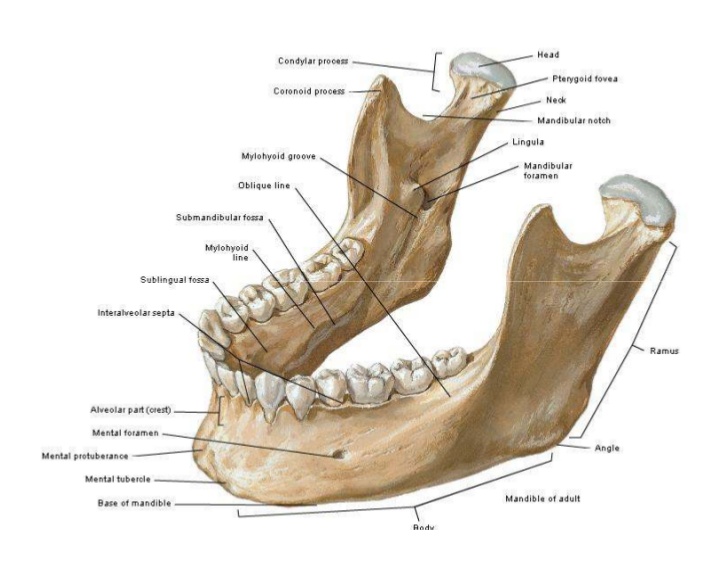Epidemiology of surgically treated mandible fractures in maxillofacial surgery service: 5 years revision
Keywords:
mandibular fractures/surgery, mandibular injuries/epidemiology.Abstract
Introduction: traumas are the fourth cause of death in general population and the second among young people. It has been reported an variable epidemiology around the world associated to demographic and socio-cultural differences, in Latin America there are few reports.
Objective: to know the epidemiology of mandible fractures surgically treated in maxillofacial surgery service at Carlos Manuel de Cespedes hospital, Bayamo, Cuba.
Methodological design: a quantitative retrospective descriptive study in maxillofacial surgery service at Carlos Manuel de Cespedes hospital, which consisted in data collection from clinical records from patients surgically treated for mandible fractures from January 2011 to December 2015. Data were gathered in a data base in Microsoft Access 2007 to be tabulated and graphics were made from Microsoft Excel 2007.
Results: from 262 face fractures, 74 clinical records of surgery for mandible fractures were available for analysis. Proportion men: women was 8:1, the age group more affected was from 20 to 29 years old. Attacks by thirds were the most frequent cause. Most of the patients were treated in 8 days from admission as an average.
Conclusion: these results in general agree with literature, but the associations between affected anatomical site and etiology.
Downloads
References
1. Rojas RA, Julián G, Lankin J. Fracturas mandibulares. Experiencia en un hospital de trauma. Rev Med Chile [Internet]. 2002 [citado 15 May 2016]; 130:537-43. Disponible en: http://www.scielo.cl/scielo.php?script=sci_arttext&pid=S0034-98872002000500008.
2. Chrcanovic BR, Nogueira M, Freire Maia B, Napier L. 1454 Mandibular fractures: A 3-year study in a hospital in Belo Horizonte, Brazil. J Craniomaxillofac Surg. 2012; 40(2):116-23.
3. Gassner R, Tuli T, Hächl O, Rudisch A, Ulmer H. Cranio-maxillofacial trauma: A 10 year review of 9543 cases with 21 067 injuries. J Craniomaxillofac Surg. 2003; 31(1):51-61.
4. Eggensperger N, Smolka K, Scheidegger B, Zimmermann H, Ilzuka T. A 3- year survey of assault-related maxillofacial fractures in central Switzerland. J Craniomaxillofac Surg. 2015; 35:161-7.
5. Patrocinio L, Patrocinio J, Carrijo B, de Santi B, Figueira L, Villela J., et al. Mandibular fracture: Analysis of 293 patients treated in the Hospital of Clinics Federal University of Uberlândia. Rev Bras Otorrinolaringol [Internet]. 2014 [citado 15 May 2016]; 71(5):560-5. Disponible en: http://www.scielo.br/scielo.php?pid=s0034-72992005000500003&script=sci_arttext&tlng=en.
6. Brasileiro BF, Passeri LA. Epidemiological analysis of maxillofacial fractures in Brazil: A 5-year prospective study. Oral Surg Oral Med Oral Pathol Oral Radiol Endod. 2006; 102(1):28-34.
7. Allareddy V, Allareddy V, Nalliah RP. Epidemiology of facial fracture injuries. J Oral Maxillofac Surg. 2011; 69(10):2613-8.
8. Al Ahmed HE, Jaber MA, Abu Fanas SH, Karas M. The pattern of maxillofacial fractures in Sharjah United Arab Emirates: A review of 230 cases. Oral Surg Oral Med Oral Pathol Oral Radiol Endod. 2004; 98(2):166-70.
9. Zúñiga E, Yoma T, Núñez C, Quezada G, Sung HH. Epidemiological profile of craniofacial trauma in the Hospital Barros Luco Trudeau, Santiago, Chile. Period 2006-2010. Int J Oral Maxillofac Surg. 2011; 40(10):1112.
10. Bither S, Mahindra U, Halli R, Kini Y. Incidence and pattern of mandibular fractures in rural population: a review of 324 patients at a tertiary hospital in Loni. Maharashtra. India. Dent Traumatol [Internet]. 2008 [citado 15 May 2016]; 24(4): 468-70. Disponible en: http://onlinelibrary.wiley.com/doi/10.1111/j.1600-9657.2008.00606.x/full;jsessionid=E6A7F1D5702F5C264EE2C50FD2F0589A.f02t04
11. Matos FP de, Arnez M, Sverzut C, Trivellato E. A retrospective study of mandibular fracture in a 40-month period. Int J Oral Maxillofac Surg. 2010; 39(1):10-5.
12. Antoun J, Lee K. Sports-related maxillofacial fractures over an 11-year period. J Oral Maxillofac Surg. 2008; 66:504-8.
13. Iida S, Hassfeld S, Reuther T, Schweigert H-G., Haag C, Klein J, et al. Maxillofacial fractures resulting from falls. J Craniomaxillofac Surg. 2003; 31:278- 83.
14. Henning E, Butte JM, Gonzalez P, Apablaza JP. Traumatismos maxilofaciales en el Hospital Clínico Regional de Valdivia. Cuad Cir.2001; 15:35-9.

Published
How to Cite
Issue
Section
License
Avisos de derechos de autor propuestos por Creative Commons
1. Política propuesta para revistas que ofrecen acceso abierto
Aquellos autores/as que tengan publicaciones con esta revista, aceptan los términos siguientes:- Los autores/as conservarán sus derechos de autor y garantizarán a la revista el derecho de primera publicación de su obra, el cuál estará simultáneamente sujeto a la Licencia de reconocimiento de Creative Commons que permite a terceros compartir la obra siempre que se indique su autor y su primera publicación esta revista.
- Los autores/as podrán adoptar otros acuerdos de licencia no exclusiva de distribución de la versión de la obra publicada (p. ej.: depositarla en un archivo telemático institucional o publicarla en un volumen monográfico) siempre que se indique la publicación inicial en esta revista.
- Se permite y recomienda a los autores/as difundir su obra a través de Internet (p. ej.: en archivos telemáticos institucionales o en su página web) antes y durante el proceso de envío, lo cual puede producir intercambios interesantes y aumentar las citas de la obra publicada. (Véase El efecto del acceso abierto).






